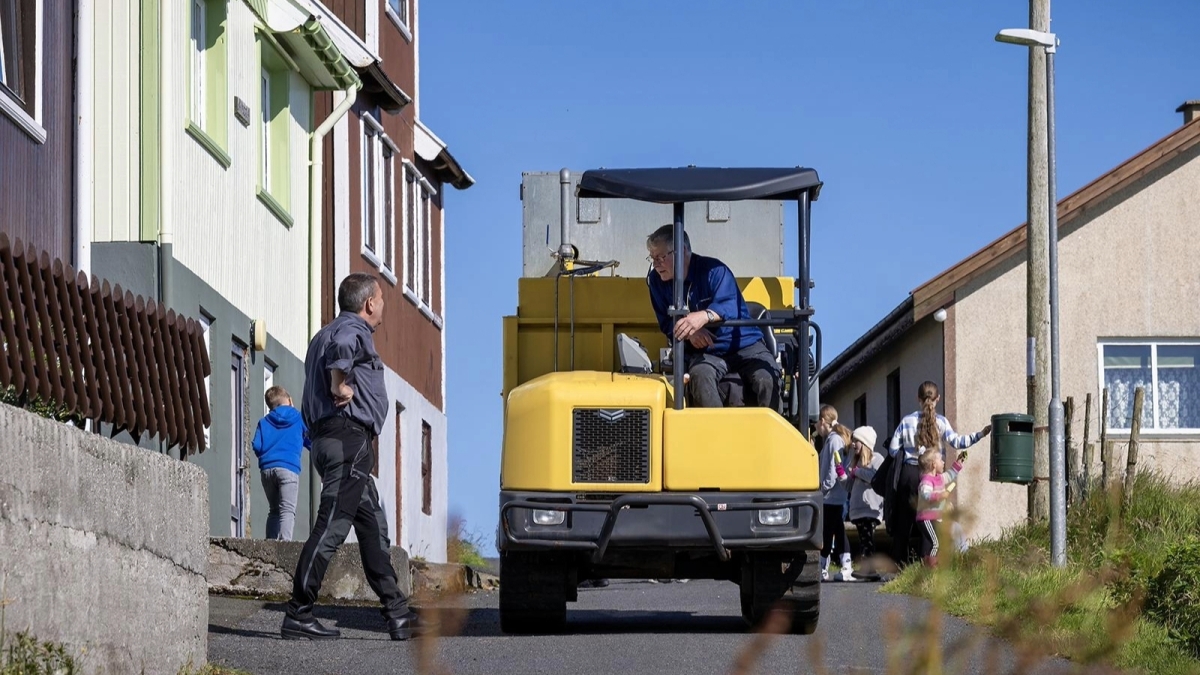Population
21. Aug 2024
Population on 1 July: 54,815 – up 0.6% year-on-year

Population growth in the Faroes is continuing; however, the annual growth rate has been declining over the past few years. From 1 July 2023 to 1 July 2024, the population increased by 333 people (0.6%), almost 200 fewer than in the previous 12-month period, which saw a 1% annual growth. The biggest contributor to this slowdown was a decline in net migration, which fell by half. The graph below shows the population trend since 1985.
[px-graph-1]
The population trend is driven by two factors: net migration (the difference in the number of immigrants and emigrants) and the excess of live births over deaths. The population growth in the past year came from an excess of 144 births and net migration of 189 people.
Net migration has halved, compared with the 1 July 2022 - 1 July 2023 period. This is primarily due to a decline in immigration. Additionally, the excess of births over deaths has decreased significantly, falling from 184 in the previous year to 144. This decline is primarily attributed to a decrease in births.
Less migration
The monthly immigration and emigration trends in the graph below reveal a decline for both. However, immigration has experienced a more significant decline than emigration.
[px-graph-2]
Fewer births
The graph below illustrates the monthly trends in birth and death rates. While death rates have become relatively stable, birth rates have continued to decline. The first half of this year saw 280 live births, 25 fewer than in the same period of 2023.
[px-graph-3]
Population in municipalities, towns and villages
Tórshavn, Klaksvík, Nes and Eystur municipalities had the biggest population growth in the past year. The towns with the biggest annual growth are Tórshavn, Klaksvík, Hoyvík and Toftir.
Strendur, Syðrugøta, Saltangará and Skopun also experienced significant population growth.
The table below shows the population across all 29 municipalities, with details for each town and village, on 1 July 2023 and 1 July 2024. Further details for each individual town and village are available here.
[px-graph-4]
Population in municipalities, towns and villages
Tórshavn, Klaksvík, Nes and Eystur municipalities had the biggest population growth in the past year. The towns with the biggest annual growth are Tórshavn, Klaksvík, Hoyvík and Toftir.
Strendur, Syðrugøta, Saltangará and Skopun also experienced significant population growth.
The table below shows the population across all 29 municipalities, with details for each town and village, on 1 July 2023 and 1 July 2024. Further details for each individual town and village are available here.
[px-graph-5]
Population figures have a one-month lag
The figures have a one-month lag due to delays in registrations, especially regarding address changes, where many registrations are made after the month of address change has ended. To accommodate as many corrections as possible, there is a one-month lag in the data.
About the population figures
The population is defined as all individuals registered in the national register as residents of the Faroe Islands. Population data includes date of birth, gender, place of birth, citizenship, relationship status, and, where applicable, information on immigration and emigration, domestically as well as between the Faroe Islands and other nations.
About the trend
The trend describes the population trend by adjusting for seasonal effects and other error components in the population figure.